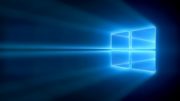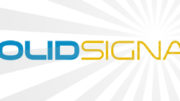When you’ve done literally thousands of these short articles, one or two stick out as favorites. This one from 2012, called Windows 8: Day 1 fail takes us back to the days when Microsoft’s future looked pretty bleak. Windows 8 was the least popular operating system at least since Vista, probably the least popular operating system ever. And when you think about it, it took so little effort to make it so much better Eliminating the need for a touch screen, adding back the start menu, and basically not hiding half the settings you need and that was about it.
The history of that article
The article itself was actually inspired by a trip I took to a then-new Microsoft store, where I had a good long discussion with an employee who claimed Windows 8 was the best because his young kids loved it so much. While one of those young kids may be my boss in 20 years, at least for now people my age are in control and we’re glad we got our start menu back.
I was criticized when I wrote that article because Windows 8 actually had some diehard fans within the Solid Signal organization. I get it, the underpinnings of Windows 8 are rock solid, which is why they didn’t change much for Windows 10. But ohmigosh the user experience! I looked at that article, with the full start screen that you had to press the Windows button to get to (or at least hover nebulously in one corner of the screen) and I think I threw up a little bit in my mouth.
Will Windows 8 ever have its revenge?
Windows 8 came out in a time when many people thought touchscreens would take over the world of business. To this day I don’t have a touchscreen on my work PC and I don’t imagine I will in the future. A lot of what Microsoft put back into Windows 10 was an acknowledgement of that.
But, Windows 8 may someday look like a prescient, even smart idea. Microsoft is getting closer and closer to a future where most of your computing experience is in the cloud. Your PC will be a “thin client” like a Chromebook. All the actual work will be done on a server somewhere else. This could mean that you log off your work PC, log on from home, and find the experience just where you left off. A touch-based experience might actually make sense at that point.
You can see where Microsoft is going. They’ve admitted to working on thin-client technology, which they’ve wanted to roll out for 20 years. You can already edit Office or 365 files from virtually any device. It’s not too far-fetched to think that one day, “Windows” might be an app on your phone or tablet. At that point a touch-based approach just might make sense.
But the visuals?
Windows 8’s visual style hasn’t aged well. It doesn’t help that the design world is moving away from the super-sharp, super-rectangular, super-flat design of the mid-’10s. New design language is already creeping into Windows. I suspect that Windows 8 will look dated and undesirable for quite a while. But everything eventually comes around. There may come a time when the charming full-screen start experience looks fresh once more. Hopefully I’ll be retired by then.





